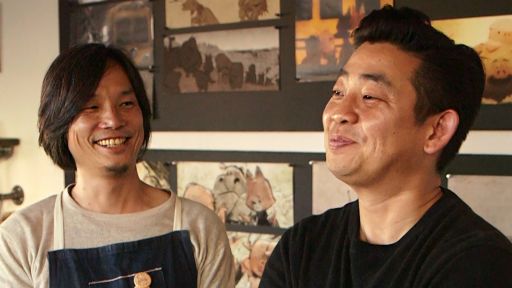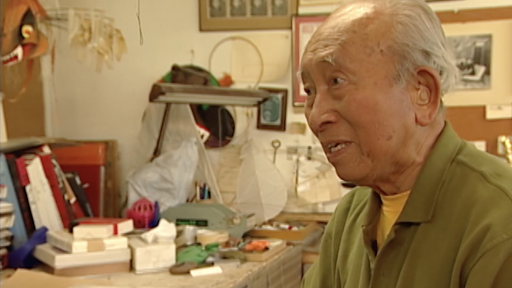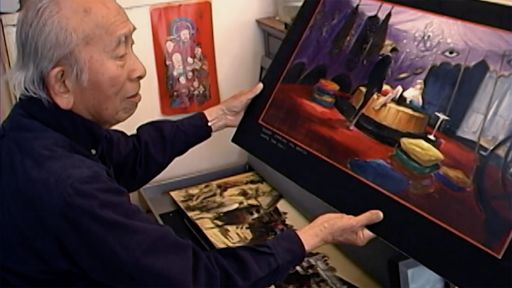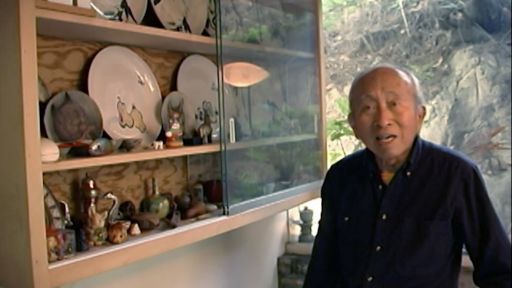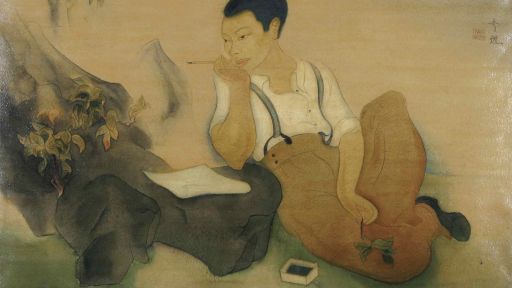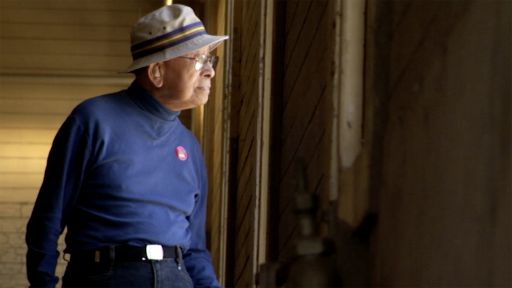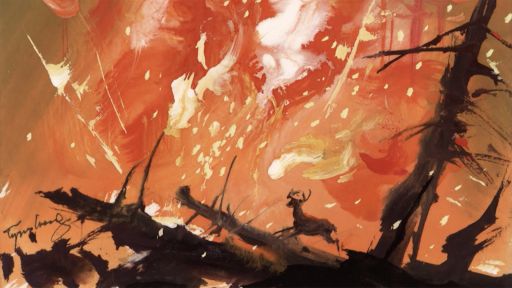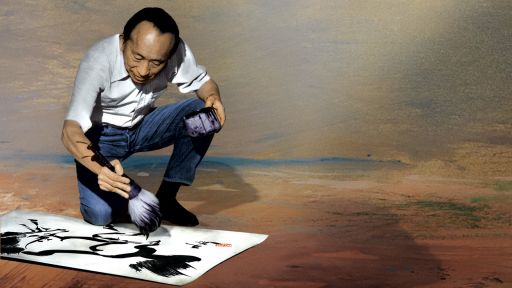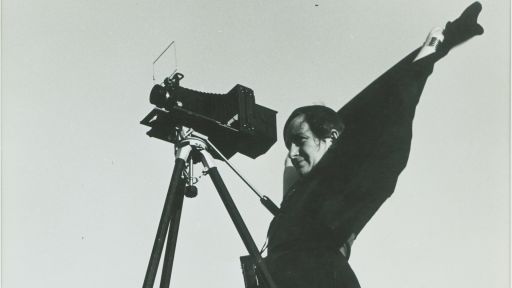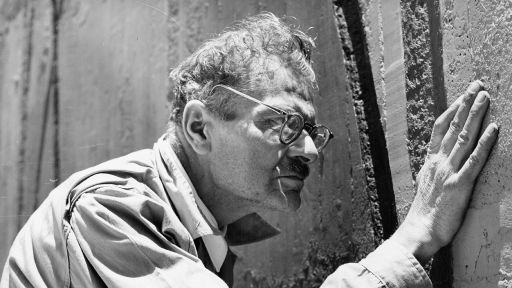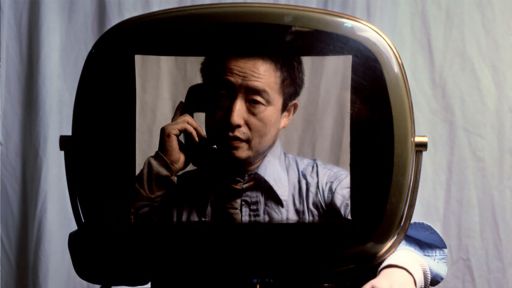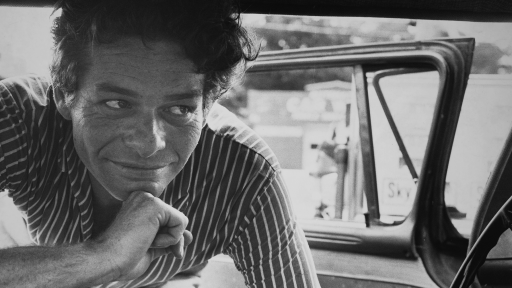Early Life
Tyrus Wong was born in Canton (now Guangzhou), China, October 25, 1910, right before the fall of the Chinese Empire. In 1919, he and his father immigrated to America, never to see their family again. Like other Chinese immigrants, Wong’s adventure to the “Gold Mountain” began in a locked cell at the Angel Island Immigration Station, where a frightened nine-year-old Tyrus was interrogated and detained for over a month. It was a time of miserable suffering, yet it did not break his spirit. “As a descendant of an Angel Island paper son, I know that the real story is not just what the immigrant experienced on the island, but what the immigrant accomplished afterwards. Because the art of Tyrus Wong has touched so many people, I saw his story as ‘Exhibit A’ to illustrate the contribution of Asian immigrants in America,” noted Angel Island Immigration Station Foundation board member Buck Gee.
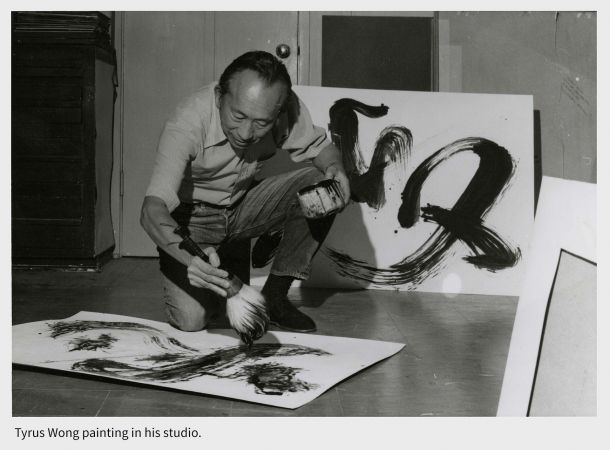 As a young boy, Wong’s only interests were painting and drawing. Too broke to afford ink or paper, his father fostered his son’s artistic talents by having him practice calligraphy by dipping brushes in water and leaving an impression on old newspapers. Although he was a self-proclaimed “lousy student,” Wong earned a scholarship from the Otis Art Institute while in junior high school and took advantage of the nearby Los Angeles Central Library to study the art of the Sung Dynasty in his free time. But it wasn’t an entirely academic, intellectual path: Tyrus took on a number of odd jobs to make ends meet, from serving as a waiter in the bohemian underground Chinatown restaurant Dragon’s Den to picking asparagus in the fields. “The plight of the Chinese was very different in the early 1900s. There were fewer opportunities because of many obstacles. Despite this, Tyrus was able to persevere and develop his artistic skills. I admire Tyrus Wong for his tenacity, hard work and conviction in what he believes, and feel it is our obligation to see that his story is preserved for future generations,” said American Masters: Tyrus executive producer Robert Louie.
As a young boy, Wong’s only interests were painting and drawing. Too broke to afford ink or paper, his father fostered his son’s artistic talents by having him practice calligraphy by dipping brushes in water and leaving an impression on old newspapers. Although he was a self-proclaimed “lousy student,” Wong earned a scholarship from the Otis Art Institute while in junior high school and took advantage of the nearby Los Angeles Central Library to study the art of the Sung Dynasty in his free time. But it wasn’t an entirely academic, intellectual path: Tyrus took on a number of odd jobs to make ends meet, from serving as a waiter in the bohemian underground Chinatown restaurant Dragon’s Den to picking asparagus in the fields. “The plight of the Chinese was very different in the early 1900s. There were fewer opportunities because of many obstacles. Despite this, Tyrus was able to persevere and develop his artistic skills. I admire Tyrus Wong for his tenacity, hard work and conviction in what he believes, and feel it is our obligation to see that his story is preserved for future generations,” said American Masters: Tyrus executive producer Robert Louie.
Education & Early Career
After graduating from Otis Art Institute with top honors, Wong experienced a meteoric rise as a young modernist painter. He participated in an exhibition at the Chicago Art Institute alongside Pablo Picasso and Henri Matisse in 1932, and later mounted shows in New York and Paris. Closer to home in Los Angeles, he and his fellow artists Hideo Date and Benji Okubo drew the interest and attention of critics and curators as they began to shape the cultural and artistic life of Los Angeles. Influenced by both their Asian roots and Western art training, these “Los Angeles Orientalists” left an indelible mark on the Southern California artistic landscape during the 1930s and 1940s. “Despite Americans’ mistreatment of Asian immigrants, they were, ironically, very receptive to their art,” said American Masters: Tyrus filmmaker Pamela Tom. World War II would change everything. After the bombing of Pearl Harbor and subsequent internment of Japanese Americans, their work as a group and movement came to an abrupt end.
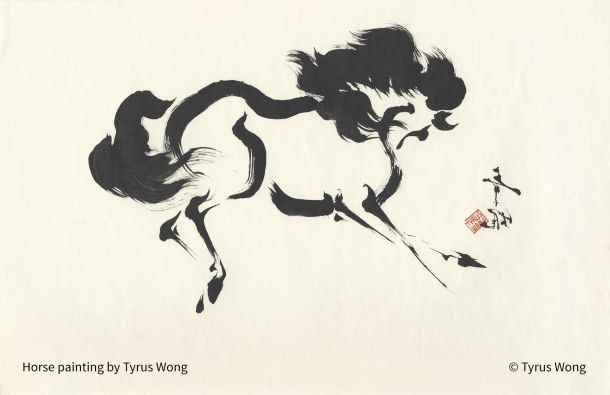 Wong became one of the first artists to infuse Chinese aesthetics into American modern art, animation and design. His masterful calligraphic brushwork, Sung Dynasty-inspired landscapes and emphasis on eliminating all but the essential details evolved into a style that is found in everything from his fine art and Depression-era WPA paintings to Christmas cards, hand-painted California dinnerware and Disney animation. In fact, the quiet beauty of Wong’s Eastern-influenced paintings caught the eye of Walt Disney and became the inspiration for the classic animated feature Bambi. In the words of celebrated Disney animator Frank Thomas, “The influence that Ty had on the film, made the film.”
Wong became one of the first artists to infuse Chinese aesthetics into American modern art, animation and design. His masterful calligraphic brushwork, Sung Dynasty-inspired landscapes and emphasis on eliminating all but the essential details evolved into a style that is found in everything from his fine art and Depression-era WPA paintings to Christmas cards, hand-painted California dinnerware and Disney animation. In fact, the quiet beauty of Wong’s Eastern-influenced paintings caught the eye of Walt Disney and became the inspiration for the classic animated feature Bambi. In the words of celebrated Disney animator Frank Thomas, “The influence that Ty had on the film, made the film.”
Warner Bros. & Concept Artistry
After parting with Disney following the notorious artists’ strike in 1941, Wong worked in the live-action realm at Warner Bros. and other Hollywood studios for more than a quarter decade. He served as a visual concept artist on over 100 live-action films including The Wild Bunch, Rebel Without a Cause, Sands of Iwo Jima, PT 109 and April in Paris. Later in his commercial art career, Wong designed greeting cards for several companies, including Hallmark, and one of his Christmas card designs sold over 1 million copies. “Tyrus was one of the first Chinese Americans to make a living in the world of art and film, which was especially notable in an era when minorities were virtually shut out of Hollywood,” explained Tom.
As time would tell, Wong wouldn’t just making a living, he’d make history, and in 2001, would be honored as such by being named a Disney Legend. Retrospectives of his work appeared at the Walt Disney Family Museum in San Francisco and at the Museum of Chinese in America in New York City.
Personal Life
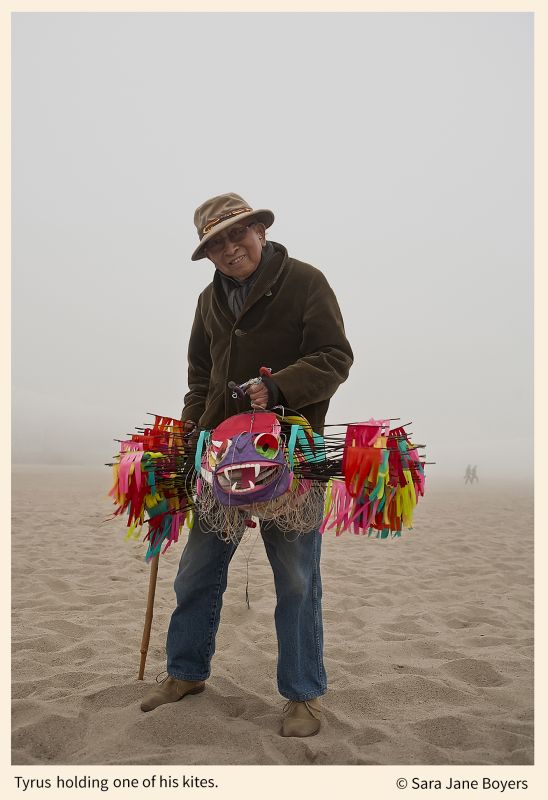 On the personal side, Wong enjoyed a half-century of marriage to Ruth Kim, and fatherhood to three daughters: Kay, Tai-ling and Kim. After retiring, he turned to kite making. He spent the next 40 years designing, building, hand-painting and flying kites; the designs were influenced by his childhood in China. On the fourth Saturday of each month, Wong traveled from his ranch home in Sunland to the beaches of Santa Monica to fly them. Surrounded by family and a coterie of fans, he would launch his colorful and fanciful menagerie of kites — 100-foot-long centipedes, butterflies, panda bears and flocks of cranes and swallows — skyward. There, they soared high above the Pacific Ocean — the same ocean Wong crossed as a young boy over 95 years ago. He died December 30, 2016, at age 106.
On the personal side, Wong enjoyed a half-century of marriage to Ruth Kim, and fatherhood to three daughters: Kay, Tai-ling and Kim. After retiring, he turned to kite making. He spent the next 40 years designing, building, hand-painting and flying kites; the designs were influenced by his childhood in China. On the fourth Saturday of each month, Wong traveled from his ranch home in Sunland to the beaches of Santa Monica to fly them. Surrounded by family and a coterie of fans, he would launch his colorful and fanciful menagerie of kites — 100-foot-long centipedes, butterflies, panda bears and flocks of cranes and swallows — skyward. There, they soared high above the Pacific Ocean — the same ocean Wong crossed as a young boy over 95 years ago. He died December 30, 2016, at age 106.
“Tyrus has made a significant impact on my life, as I have seen how one person can make a difference simply by living out their life beautifully. Tyrus sees the potential in things — he is able to bring beauty out of chaos and finds humor in the little things,” notes American Masters: Tyrus producer Tamara Khalaf.
“There will never be another Tyrus Wong. His story is born out of a time and place that no longer exists. Each era has its pioneers, and Tyrus was a pioneer of the 20th century. He is an artist who forged his own path, and whose passion and dedication led to a rich and extraordinary life. It is this life that I hope will enlighten, inspire and entertain audiences of today and of future generations,” said Tom.
Additional support for Tyrus is provided in part by The Louie Family Foundation, The Walt Disney Company Foundation, Buck Gee & Mary Hackenbracht, the National Endowment for the Arts, County of Los Angeles Board of Supervisors, Bill Yee, David Ahmanson, East West Bank, and Women in Film.

